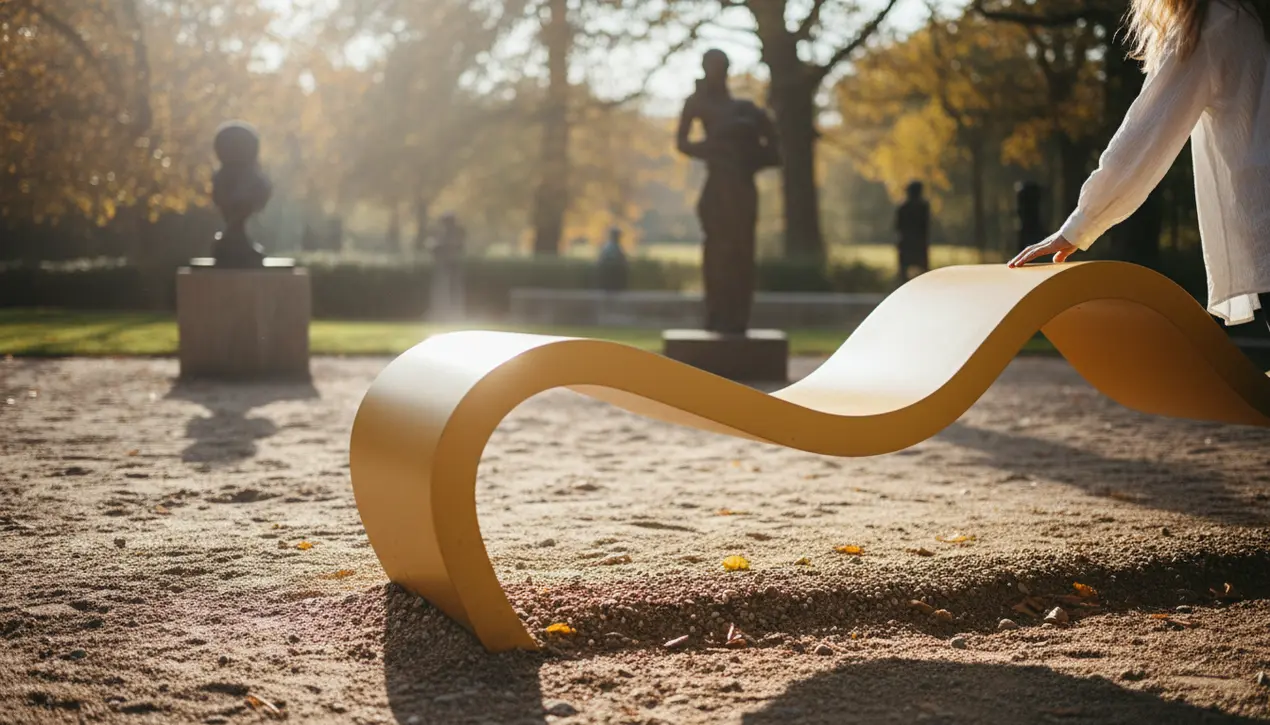
Entertainmenttheatre & artsArt Exhibitions
Ochre yellow bench installed in Netherlands museum garden.
SO
Sophia King
11 hours ago7 min read2 comments
In a move that feels less like an addition and more like an organic emergence, the installation of an ochre yellow bench in a Netherlands museum garden is a masterclass in design symbiosis. This isn't merely a place to sit; it's a conversation between form, material, and landscape, a dialogue that any creative using tools like Midjourney or Figma plugins would instantly appreciate for its iterative, almost algorithmic harmony.The bench, with its rounded aluminum form, has been finished in a specific, resonant yellow that doesn't just sit within its surroundings but actively pulls from them, creating a visual link that is both bold and seamlessly integrated. Think of it as the perfect prompt in a generative art project: the input is the garden's natural palette—the earthy tones of the soil, the specific green of the foliage, the quality of the northern European light—and the output is this bench, a functional sculpture that completes the picture.This is the kind of thoughtful intervention that defines the next wave of design, where the boundary between the human-made and the natural is not a hard line but a gradient. The designers at Weltevree, in placing this piece within the Kröller-Müller Museum's garden, have demonstrated a profound understanding of context, treating the entire space as a canvas.The aluminum, a material often associated with cold, industrial modernity, is transformed by the warm, earthy ochre, a color that has been used in art since prehistoric times, found in the very pigments of cave paintings. This historical echo gives the bench a timeless quality, grounding a contemporary object in a deep, artistic lineage.It’s a reminder that the most forward-thinking design often looks backward for inspiration, curating elements from our collective visual library. The ‘Wheelbench’ itself, with its rounded, continuous form, encourages a communal experience, a shared moment of rest and observation, much like how a well-designed AI art collective fosters collaboration.This isn't a solitary park bench; it's a social object, its form dictating a more connected, fluid interaction. For visitors wandering through the museum's renowned sculpture garden, encountering works by masters like Rodin and Moore, this bench becomes more than furniture; it is an accessible piece of art that invites physical engagement.It asks you to pause, to see the garden from a new, fixed perspective, and in doing so, it reframes the entire experience. The success of this installation lies in its deceptive simplicity.A lesser approach might have opted for a neutral grey or a forest green, aiming for invisibility. Instead, the choice of ochre yellow is a confident, artistic statement.It demonstrates that integration isn't about blending in, but about creating a harmonious contrast, a point of visual interest that enhances everything around it. It’s the design equivalent of a perfectly placed accent color in a UI scheme—it doesn't dominate, but it makes the whole composition sing. In an era where public space is increasingly valued, this project sets a high bar, showing how thoughtful design can elevate our everyday interactions with art, nature, and each other.
#featured
#design
#bench
#museum
#garden
#aluminum
#Weltevree
#Kröller-Müller Museum
#outdoor furniture
Stay Informed. Act Smarter.
Get weekly highlights, major headlines, and expert insights — then put your knowledge to work in our live prediction markets.
Comments
Loading comments...
© 2025 Outpoll Service LTD. All rights reserved.